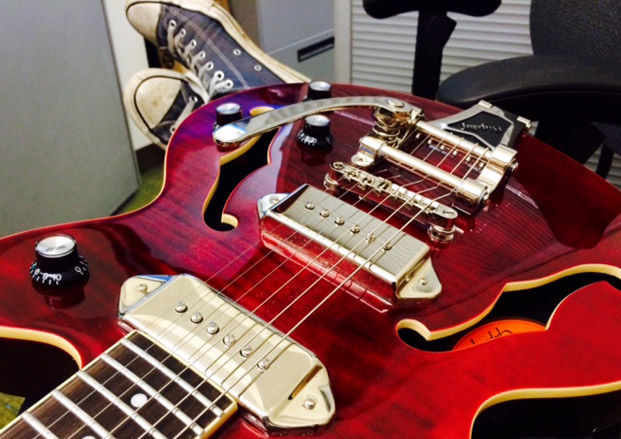Beyond the Fretboard: The Harmonic Hierarchy of a Scale

Common sources of confusion for less-experienced guitarists are the concepts of chord tones, non-chord tones, passing tones — and the differences between all three.
This topic came up recently when I was teaching a student via Skype.
He knew some of the basic scales (major, minor, pentatonic, etc.) and how to use them in soloing situations. But he thought he sounded like he was just running through patterns. No soul, no tasteful phrasing, just regurgitating patterns. Particularly, he didn't really know which notes to hold out and which notes sounded the best to bend.
This feeling of "hitting a wall" is something we've all gone through as musicians. Our initial reaction might be to quickly slap a Band-Aid over the situation and learn more licks or new scales. Sometimes that approach can help us get out of a slump. But in this situation, are we really addressing the student's concerns? No.
It's as if we're just prescribing various medications to treat a patient's chronic illness without examining its root cause, and determining whether we can offer a complete cure. Understanding why things happen and formulating a strategy of preventative medicine is the best approach in this analogy.
Instead of memorizing countless scale patterns from a book or a website, let's try to understand why certain notes sound better than others within these patterns.
We'll first look at chord tones. If you're familiar with some basic music theory, you might know that all major and minor chords are built on a foundation of three notes known as a triad. It is comprised of the first, third and fifth notes found within either a major scale (major chord) or a minor scale (minor chord).
The first note (the root) is obviously the center of attention and, consequently, all other notes will be judged either on their stable or unstable relationship to the tonal center. The third and fifth notes will have the strongest connection to the root note. Think of them as being in the "goldilocks" zone; they're not too far away from the root, not too close, but in just the right spot which produces a very appealing and balanced harmony. Bending or sliding into these notes will translate into a pleasing sense of resolution to the listener.
The second, sixth and seventh notes could be considered non-chord tones. They're still very useful, but they each introduce varying degrees of tension in relation to the tonal center. However, tension isn't always a bad thing and could add some much needed character to otherwise predictable sounding licks. You can sit on any of these notes, but beware, your ear will most likely pull you toward the nearest chord tone. At that point, you can decide how much tension you're willing to tolerate.
The fourth note is almost in a league if its own. When playing in a major key, the fourth is only a half step (semitone) away from the third. This makes things sound very tense if you decide to hold out this note. It will never sound resolved, always wanting to rest on the major third.
In a minor key, the tension is less obvious because that flat (minor) third is a whole step away from the fourth. In some rock and blues progressions, you can ride on the fourth for a little while and use that tension to your advantage. As always, use your ears and experiment.
Since any major or minor scale contains only seven notes (and there are 12 notes in Western music), we can assume there will always be five non-harmonic notes in a given musical context. These notes will never sound stable in relation to the tonal center and, therefore, we call them passing tones. Treat them with caution, but they've been used to great effect in blues, jazz and some rock music.
So now we have a harmonic hierarchy of notes in order of their primary (chord tones), secondary (non-chord tones) and tertiary (passing tones) roles. We can write licks and phrases based on this knowledge and decide when to maximize tension or resolution.
When you become comfortable with this hierarchy, memorizing patterns will seem less important. What's now important is the emotional impact you can communicate through your solos.
Chris Breen is a New Jersey-based guitarist with 14 years of experience under his belt. He, along with his brother Jon (on drums) started the two-piece metal project known as SCARSIC in 2011. Due to a lack of members, Chris tracked guitars, bass and vocals for their self titled four-song demo (available on iTunes, Spotify and Rhapsody). They have recently been joined by bassist Bill Loucas and are writing new material. Chris also is part of an all-acoustic side project known as Eyes Turn Stone. Chris teaches guitar lessons as well (in person or via Skype). If you're interested in taking lessons with Chris, visit BreenMusicLessons.com for more info.
Get The Pick Newsletter
All the latest guitar news, interviews, lessons, reviews, deals and more, direct to your inbox!










